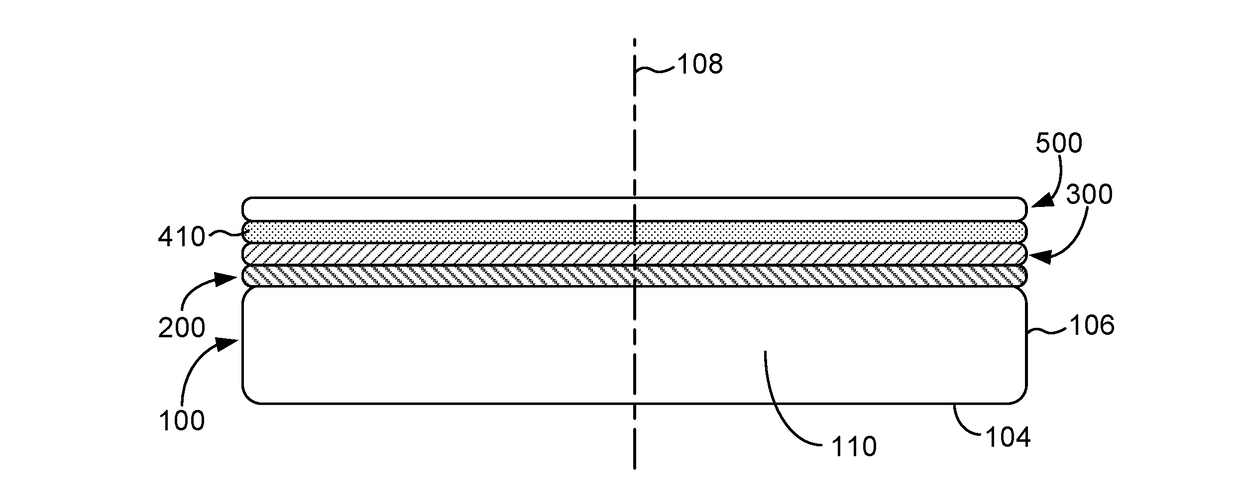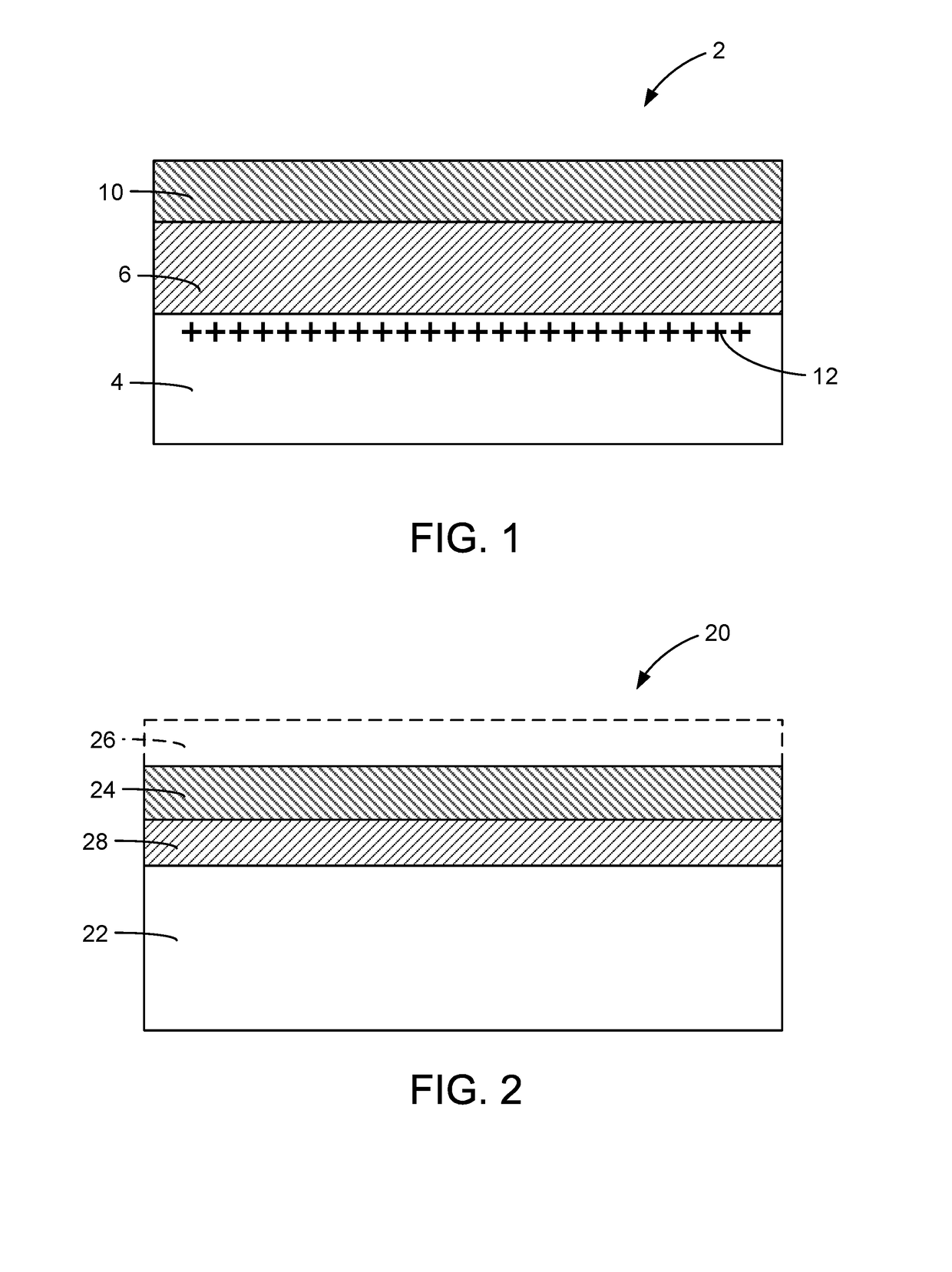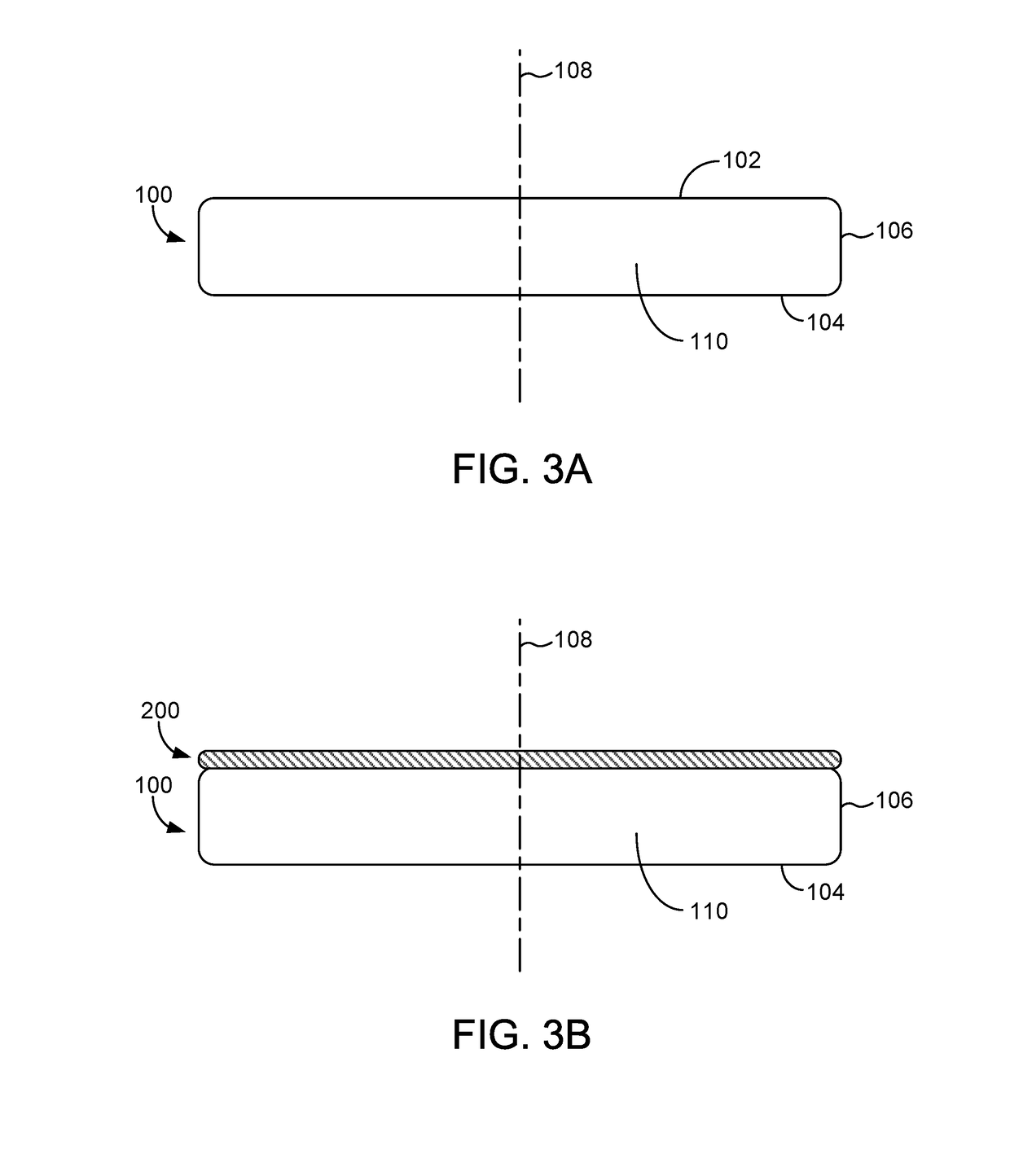High resistivity silicon-on-insulator structure and method of manufacture thereof
a silicon-on-insulator, high-resistance technology, applied in the direction of semiconductor devices, semiconductor/solid-state device details, electrical apparatus, etc., can solve the problems of wasting one of the substrates, not having suitable thickness uniformity, and time-consuming and costly methods
- Summary
- Abstract
- Description
- Claims
- Application Information
AI Technical Summary
Benefits of technology
Problems solved by technology
Method used
Image
Examples
example 1
[0069]Donor wafers were oxidized in an ASM400 vertical furnace. The oxide was grown to match the thickness of the BOX layer desired in the final semiconductor-on-insulator structure. After oxidation, donor wafers were subjected to helium and hydrogen implant with implant energies chosen to place the ions at a depth in the silicon donor wafer to achieve the desired silicon device layer thickness in the final SOT structure. Wafers were prepared for bonding by subjecting them to a piranha clean, followed by SC1 / SC2 cleaning according to standard industry methods.
[0070]Handle wafers (resistivity greater than 3000 ohm-cm) were prepared. Polycrystalline silicon was deposited and polished to achieve a roughness of less than 5 angstroms RMS. The wafers were cleaned by SC1 / SC2 cleaning according to standard industry methods. The donor wafers and the handle wafers were loaded into the EVG®810LT Low Temp Plasma Activation System. The chamber was evacuated and backfilled with N2 to a pressure o...
PUM
 Login to View More
Login to View More Abstract
Description
Claims
Application Information
 Login to View More
Login to View More - R&D
- Intellectual Property
- Life Sciences
- Materials
- Tech Scout
- Unparalleled Data Quality
- Higher Quality Content
- 60% Fewer Hallucinations
Browse by: Latest US Patents, China's latest patents, Technical Efficacy Thesaurus, Application Domain, Technology Topic, Popular Technical Reports.
© 2025 PatSnap. All rights reserved.Legal|Privacy policy|Modern Slavery Act Transparency Statement|Sitemap|About US| Contact US: help@patsnap.com



